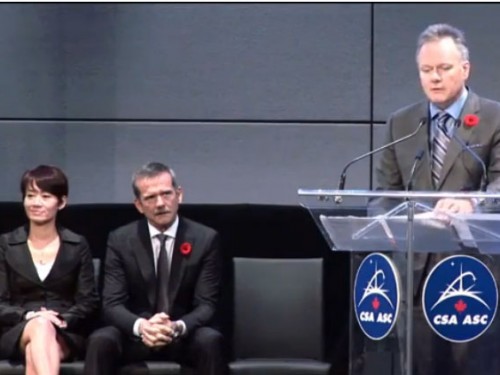$5 and $10 Bank Note Issue
Good morning friends and colleagues and welcome to this event to launch the new $5 and $10 polymer notes.
I am very pleased to be here in beautiful Vancouver, representing the Bank of Canada.
And like the Governor, I am proud of these bank notes. They are making history: a first for Canada and, indeed, the world.
With these notes, Canada breaks new ground. They are safer, cheaper, and greener.
Safer, because all the notes have the same state-of-the-art security features, using holography, transparency and other elements that make them very difficult to counterfeit but easy for everyone, especially those behind the counter, to verify.
We are the first - and for now, the only country - to have a hologram within a transparent window on our bank notes.
Cheaper, because they last longer than paper notes. This means fewer notes will need to be printed and transported, making the series more economical.
Greener, because over the life of the series, fewer notes will be produced. And when they do wear out, they will be recycled. It’s possible that they’ll be recycled into new products - products, such as this flowerpot.
Those are some facts about the new notes. But let me put to rest a few urban myths that have been making the rounds about the polymer notes.
My favourite myth is that the notes smell like maple syrup. They don’t. So if you get a new bank note and it doesn’t smell of maple syrup, don’t worry. That’s a good thing.
And you can rest assured; there is no chance these notes will melt if you put them on the dashboard of your car. Trust me on this. There is a chance, however, that your car might be broken into, so I don’t recommend it.
Starting today, these safer, cheaper, greener, bank notes will be rolled out across Canada; and over time, they will make it into everyone’s hands.
Given the striking imagery on the $10 bank note, it is entirely appropriate that we are here on National Railway Day. This day marks the anniversary of the hammering of the last spike into the railbed in Craigellachie, British Columbia. That act, 128 years ago today, concluded the construction of the railway system upon which Canada was built.
We are very lucky to have the last spike with us here today.
Well, sort of the last spike. Every spike has a story. In actual fact, there were three spikes. The first was damaged when it was hammered in, so it was removed and turned into jewellery. The second “last” spike was removed shortly after it was driven in to make sure that no souvenir hunters grabbed it. It was eventually transformed into a carving knife.
The spike we have here today truly is the “last” spike, in that it’s the one that has lasted. It was supposed to be driven in by the Governor General of the time, Lord Lansdowne. An unforeseen glitch that Canadians throughout history can relate to - a snowstorm - prevented Lord Lansdowne from attending the ceremony, so he mounted the spike and sent it to Sir William Van Horne, the CPR executive who led the project.
But to tell us more about Canada’s railway, I would like to ask Marc Laliberté, President and CEO of VIA Rail, to come to the podium.

